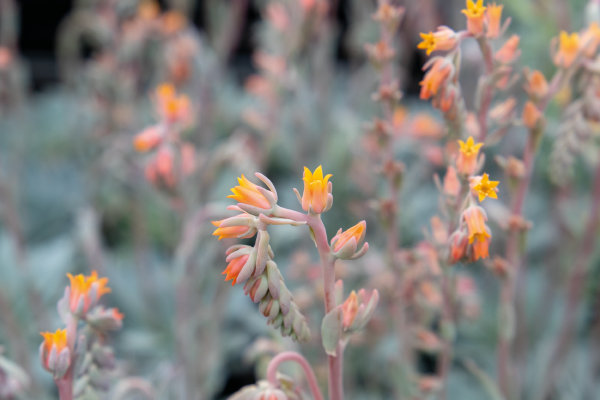

Urban Orange
Item no.: EP0101PTrendy Structural Plant for Indoor and Outdoor
- Very attractive, early flowering
- Easy-care pot plant
- Attractive structural plant for mixed combinations
- BeGreen Pelleted: Chemical and microplastic-free
- Crop Time
- Spring: 17 - 24 weeks
- Height ∅
- 12 ″ / 30 cm
- Exposure
- Sun
- Seed Form
- BeGreen Pelleting
- Hardiness Zone
- not frost hardy
- Best Uses
- Bedding, Rockery
Culture guide
Usage
Very slow growing succulent pot plant for indoors, plants for graves, plants for rock and succulent garden.
Sow time
February-April
Sowing method
1 seed per plug
Germination
10-18 days at 68-72 °F (20-22 °C) Requires light for germination. Avoid direct sunlight by shading seeds after sowing.
Growing on
Grow on at day temperatures of 64-76 °F (18-25 °C) and night temperatures of 59-64 °F (15-18 °C).
Media
Use a well-drained, growing substrate with 10-30 % clay, 0-15 % parts (perlite or sand), 1,5-3 kg/m³ complete balanced fertilizer, 0-2 kg/m³ slow release fertilizer (9-12 months), iron-chelate, micronutrients, pH: 6.5-7.5.
Temperature
Grow at 18-25 °C during daytime and 15-18 °C during night. Cooler temperatures in the night are better for the foliage pigmentation. In winter indoors at 15-18 °C. Temperatures below 15 °C will result in leaf deformation. Echeveria does not tolerate frost.
Fertilization
Moderate fertilization levels are required. Fertilize the crop weekly with 100-150 ppm nitrogen, using alternate a calcium nitrate fertilizer and a potassium balanced fertilizer (N: K₂O-ratio: 1:1,5). In the beginning of the growth period fertilize the main portion of nitrate and later in August the potassium. Avoid high ammonium and high nitrogen levels. Don’t fertilize after mid September. In spring fertilize with 100-150 ppm nitrogen of a potassium balanced fertilizer.
Stage I Starts with the radicle breaking through the testa. The roots are touching the medium. Ends with fully developed cotyledons.
Stage II Starts from fully developed cotyledons. Ends with the fully developed true leaf or true leaf pair.
Stage III Starts from the fully developed true leaf or true leaf pair and ends with 80% of the young plants being marketable.
Stage IV All young plants are ready for sale and in the process of being hardened off. This stage lasts about 7 days.
The cultural recommendations are based on results from trials conducted under Central European conditions. Different conditions in other parts of the world may lead to deviations in results achieved.

